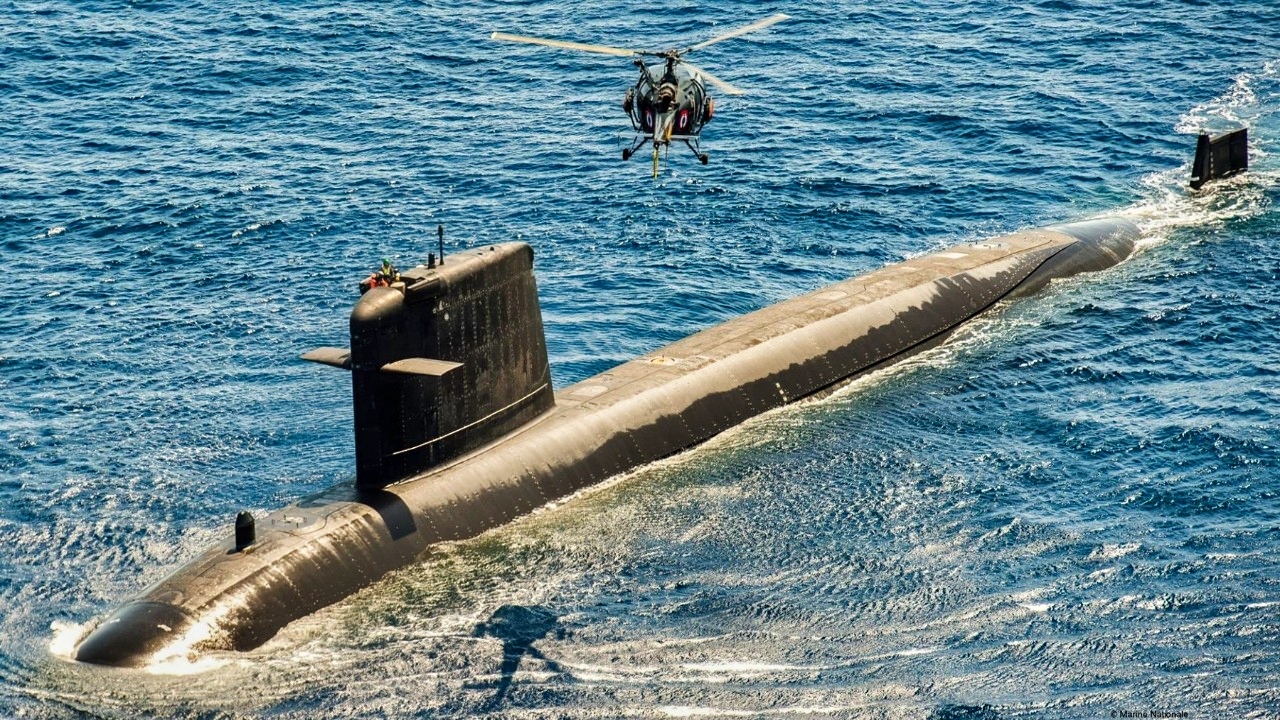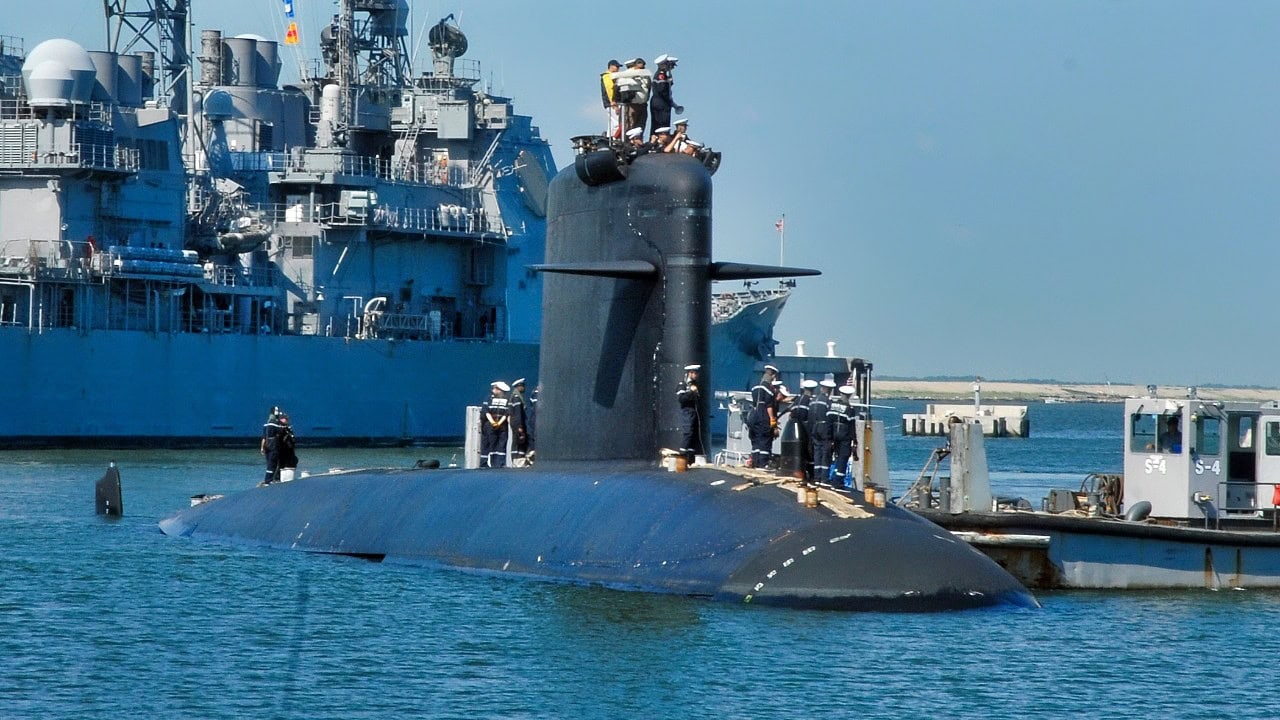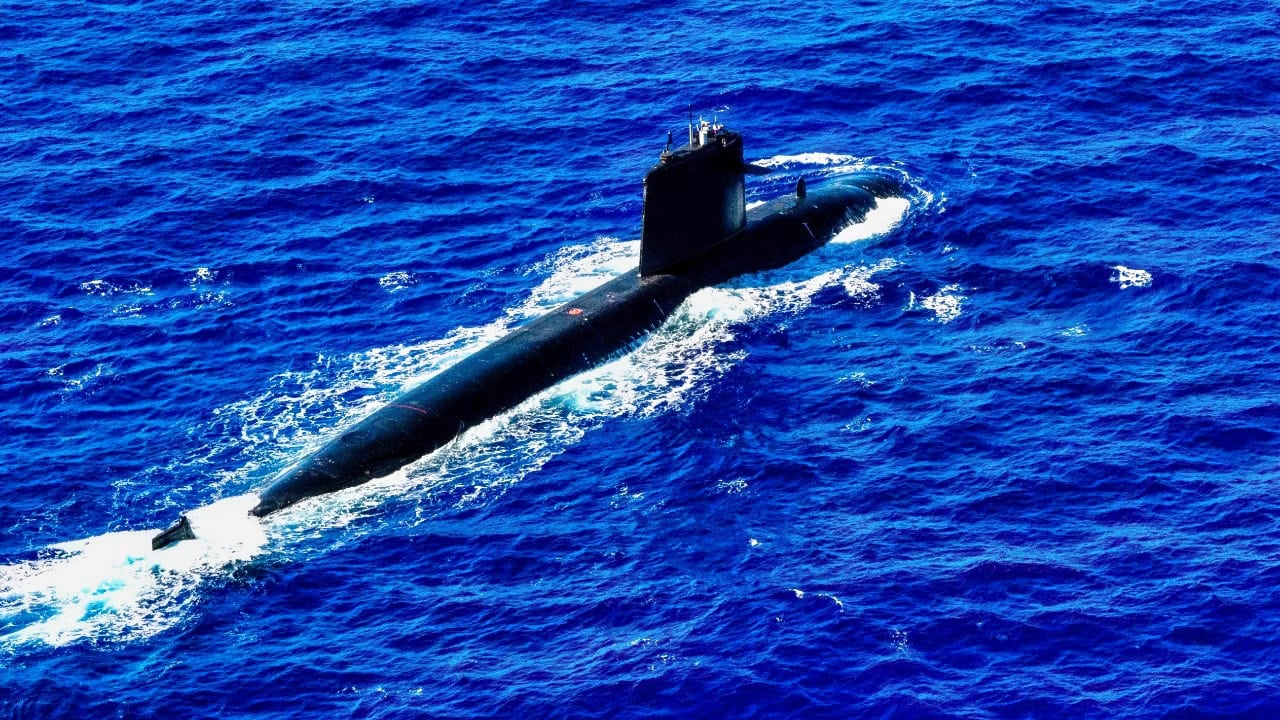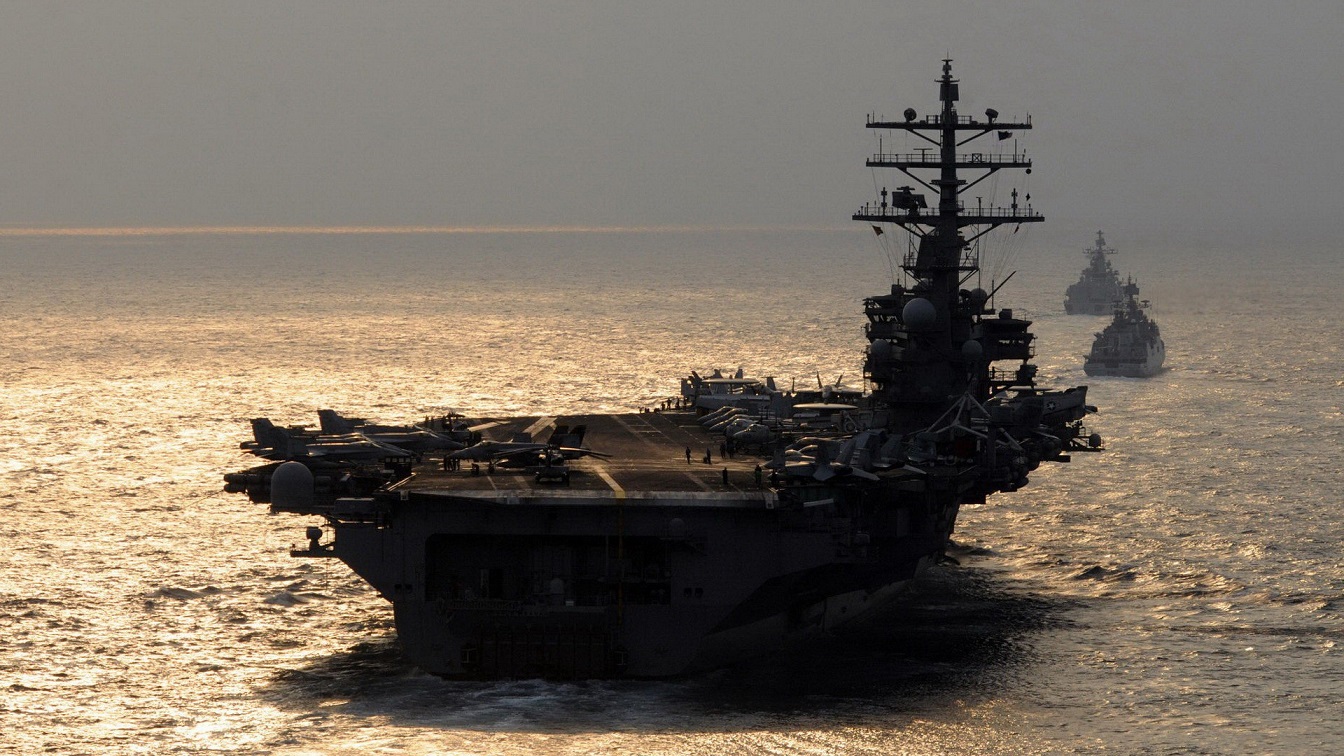Summary and Key Points: The Rubis-class submarines marked a milestone for the French Navy as the world’s smallest nuclear-powered attack submarines upon their debut in the 1980s.
-Their compact design, advanced sonar systems, nuclear propulsion, and robust armament—featuring F17 torpedoes and Exocet missiles—made them a formidable maritime threat.
-Notably, during joint exercises in 2015, the Rubis-class submarine Saphir successfully simulated sinking the American aircraft carrier USS Theodore Roosevelt, demonstrating their tactical prowess and highlighting potential vulnerabilities in U.S. naval defenses.
-Although being replaced by the new Suffren-class submarines, the Rubis-class leaves behind a significant legacy in France’s naval warfare capabilities.
The Rubis-Class: A History
The Rubis-class submarine was a significant accomplishment for the French Navy for many reasons. As the world’s smallest nuclear-powered attack submarines at their inception, these vessels have played a crucial role in France’s maritime strategy since the early 1980s.
Despite their age, the Rubis-class has been a critical asset to the French Navy, showing off their capabilities even against technologically superior foes.
The submarines got more recognition when the Saphir, a French Rubis-class, successfully “sunk” an American aircraft carrier during joint exercises.
Intro to the Rubis-Class
The Rubis-class submarines were constructed by the French Naval Group (formerly DCNS) and are known for their compact yet robust design. The submarines have a displacement of approximately 2,400 tons when surfaced and 2,600 tons when submerged. Measuring 73.6 meters in length and 7.6 meters in beam, they are smaller than many of their contemporaries but deliver significant capabilities in both littoral and open-sea environments.
As France’s first nuclear attack subs, one of the defining features of the Rubis-class is their nuclear propulsion system, powered by the K48 pressurized water reactor. This reactor provides the submarines with virtually unlimited range and allows them to operate submerged for extended periods without refueling.
The propulsion system includes two turbo-alternators and one electric motor, enabling the submarines to achieve speeds exceeding 25 knots while submerged.
The Rubis-class submarines are equipped with advanced sonar suites, including the DMUX 20 active/passive sonar, ETBF DSUV 62C towed array passive sonar, and DSUV 22 passive cylindrical array sonar with active transducer. These systems allow the submarines to detect and track submarines, surface vessels, and other maritime threats effectively. Additionally, the submarines are armed with F17 torpedoes and SM39 Exocet missiles, providing them with the capability to engage both underwater and surface targets.
Rubis-Class vs an American Aircraft Carrier
In 2015, the United States and France partook in joint exercises. In one exercise, a French Rubis-class, the sub was able to slip past the USS Theodore Roosevelt’s (a Nimitz-Class aircraft carrier) defenses, and simulated an attack against the carrier and “sunk” it. Although it was just ab exercises, the event showcased the subs capabilities even against sophisticated American systems.
The exercise involved the USS Theodore Roosevelt, a Nimitz-class nuclear-powered aircraft carrier, and its accompanying Carrier Strike Group 12 (CSG-12). This group included several Ticonderoga-class guided missile cruisers, Arleigh Burke-class destroyers, and a Los Angeles-class nuclear attack submarine.
The French submarine Saphir, part of the Rubis-class, was tasked with penetrating the defenses of this formidable group.
The exercise took place in two phases. In the first phase, the Saphir integrated with U.S. Navy forces to locate enemy submarines and pass data to other friendly ASW assets. This phase allowed the Saphir to familiarize itself with the operational environment and the tactics of the U.S. Navy.
How a French Submarine Slipped Through America’s Defenses
In the second phase, the Saphir switched roles and became the adversary. The objective was to penetrate the defenses of the Carrier Strike Group and simulate an attack on the USS Theodore Roosevelt. The Saphir successfully maneuvered through the carrier group’s defenses and scored simulated torpedo hits on the carrier and several of its escorts.
The simulated sinking of the USS Theodore Roosevelt by the Saphir was a significant achievement for the French Navy. It demonstrated the potential vulnerabilities of carrier strike groups to undersea threats and highlighted the importance of maintaining robust ASW capabilities. It also showed off the Rubis-class submarine’s capabilities against technologically superior adversaries. The exercise also served as a reminder that even the most advanced and expensive naval assets are not invulnerable.
The Fate of the Rubis-class
The Rubis-class submarines are gradually being phased out and replaced by the new generation of nuclear-powered attack submarines, the Suffren-class. The lead boat of the Suffren-class, Suffren, entered operational service in June 2022. As of now, four of the six Rubis-class submarines—Saphir, Rubis, Casabianca, and Émeraude—have been decommissioned between 2019 and 2024. The Perle is currently the last operational Rubbis-class submarine.
The “Carrier-Killing” Rubis-Class Submarine
The exercise with the Americans helped immensely to bolster the Rubis-class’s reputation. Their compact design and advanced sonar systems have made them highly effective in both littoral and open-sea environments. The nuclear propulsion system has provided the French Navy with a reliable and versatile platform for extended underwater missions.
Despite their gradual replacement by the Suffren-class, the Rubis-class submarines have left a lasting legacy. As one of the only subs to “sink” an American carrier, they have demonstrated the importance of ingenuity and adaptability in submarine design.
The Rubis-class submarines have been a cornerstone of French naval power for over four decades. Their compact design, advanced sonar systems, and nuclear propulsion have made them a highly effective tool in France’s arsenal.
As they are gradually phased out and replaced by the Suffren-class, the legacy of the Rubis-class submarines will continue to influence the future of Franc’s naval design and operations. The French’s status as a strong naval power has been firmly cemented as even their tiny and relatively cheap submarines can stand up against the nearly uncontested U.S. Navy.
Meet the Rubis Submarines: A Short Photo Essay

Rubis-Class French Navy Submarine. Image Credit: Creative Commons.

Rubis-Class: The French nuclear attack submarine FS Amethyste arrives at Naval Station Norfolk after completing patrol operations in the West Indies. Amethyste is making a four-day port call before joining the Theodore Roosevelt Task Group for Joint Task Force Exercise starting next week.

Rubis-Class Submarine from France
About the Author: Isaac Seitz
Isaac Seitz, a 19FortyFive Defense Columnist, graduated from Patrick Henry College’s Strategic Intelligence and National Security program. He has also studied Russian at Middlebury Language Schools and has worked as an intelligence Analyst in the private sector.

